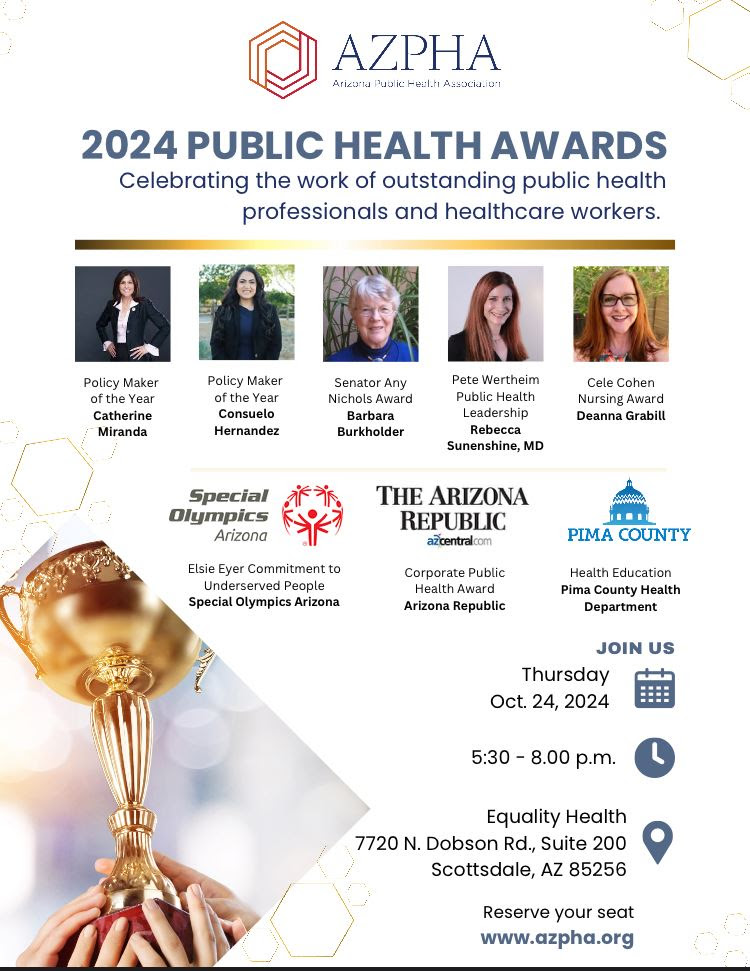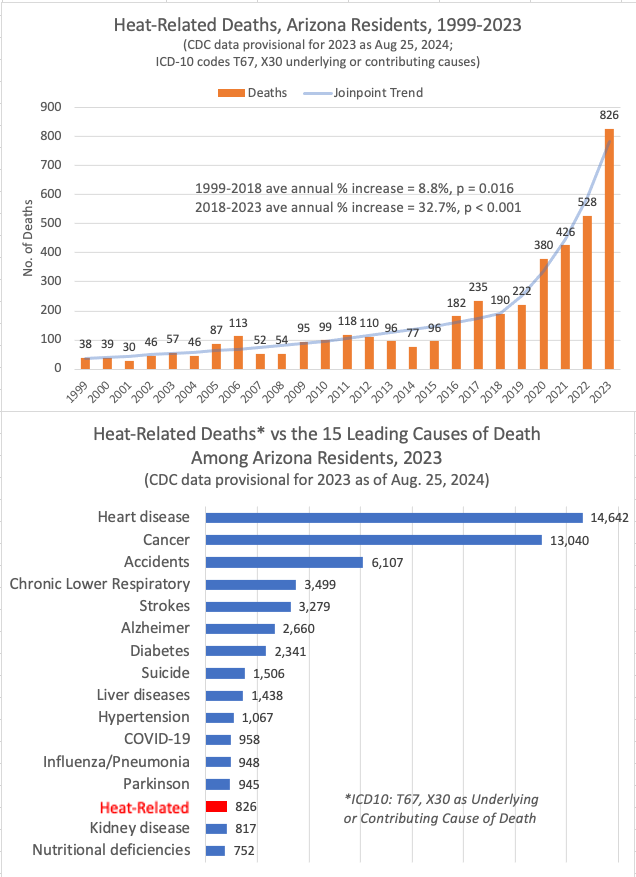Each year AzPHA recognizes public health professionals, health professionals and community members across Arizona who are performing extraordinary services to our community at our annual awards event. Many of our awards go back decades. We’re proud to announce that our 2024 award program will be held:
|
Thursday, October 24, 2024 5:30 – 8:00pm Equality Health: 7720 N. Dobson Rd., Suite 200 Scottsdale, AZ 85256 |
Register Today: Only $40!
Includes complimentary drinks, Taco Bar from Senior Taco, & networking opportunities!
This Year’s Award Winners:
Policymakers of the Year
Senators Catherine Miranda & Consuelo Hernandez
Arizona State Senators
Senator Andy Nichols Honor Award
Barbara Burkholder
Arizona Asthma Coalition
Pete Wertheim Public Health Leadership Award
Rebecca Sunenshine, MD
Chief Medical Officer,
Maricopa County Department of Public Health
Cele Cohen Nursing Award
Deanna Grabill
Manager of Population Health,
Valleywise Health
Elsie Eyer Commitment to Underserved People Award
Arizona Special Olympics
Harold B. Woodward Award
Gordon Jensen
Corporate Public Health Service Award
The Arizona Republic
Investigative Journalism: Mental Health, Senior Care & Criminal Justice
Health Education Award
Pima County Health Department
The Health Loteria Program






